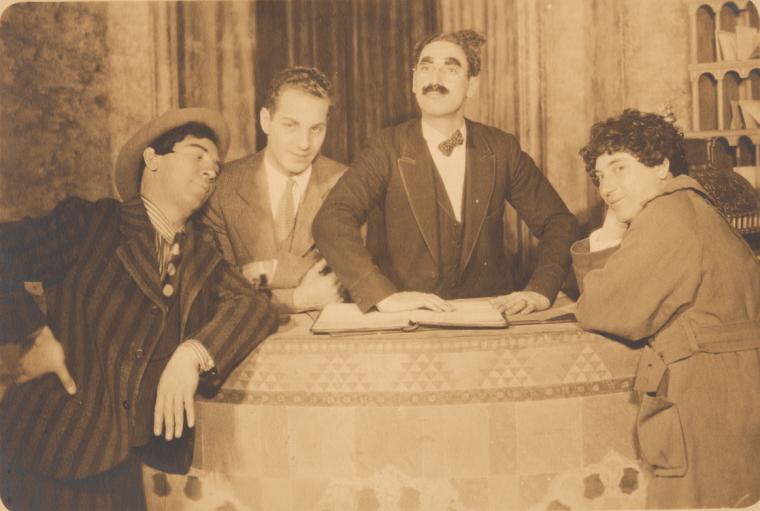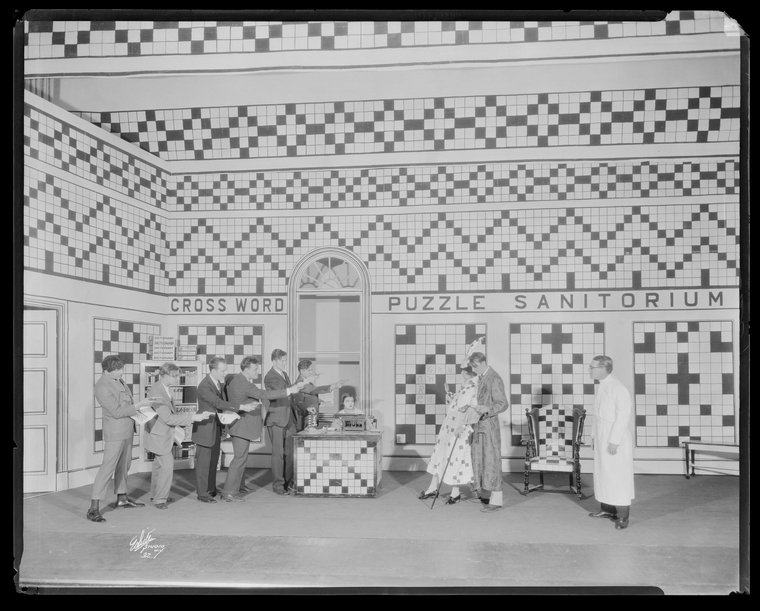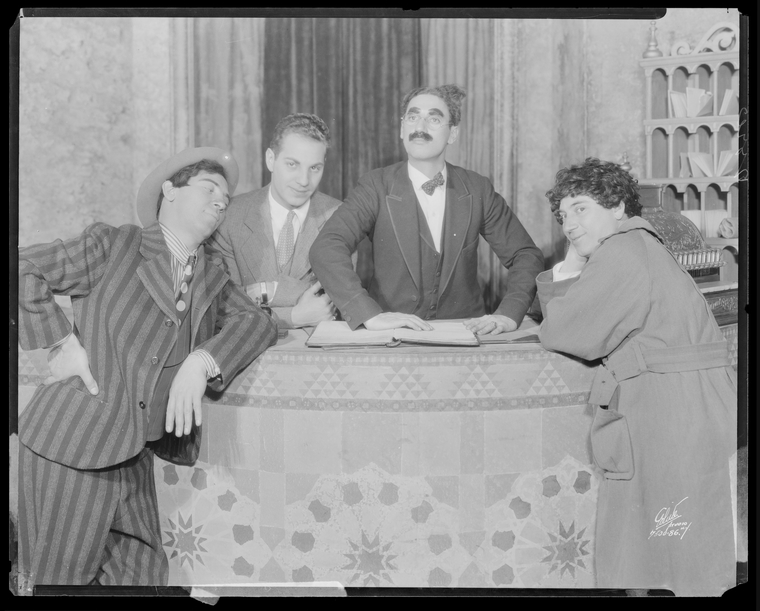Explore White Studio's Theatrical Photography Online
The Billy Rose Theatre Division of the New York Public Library holds one of the largest collections of photography of New York City theatre in the world. Along with hundreds of thousands of photographs organized by show title or personality name in our general photograph files, we also preserve the full collections of most of the major theatre photography studios from the 20th and 21st centuries.
The collection is remarkable not just for the number of productions it documents (and nearly every New York play and musical from The Black Crook to Hamilton is represented), but also for the history of photographic technology and techniques it preserves. Media in the collection run the gamut from glass plate negatives to color slides to digital Canon Camera RAW files.
Some of the earliest photographs in the collections are those shot by White Studio between 1904 and the dissolution of the studio and the death of founder Lucas White in 1936. White and one of his chief photographers, George Lucas, became the de facto industry photographers of commercial theatre in the first two decades of the 20th century after they pioneered a new technique for a faster and less smoky technology for flash photography than had been used in previous years. A 1924 article in The New York Times reported that prior to White and Lucas's innovation, a promotional photo shoot for a major production would take “two or three nights” because of both the “slow lenses” and “the dense cloud of white smoke and the resulting shower of dirt and dust” that would become so “dense and thick and acrid that actors’ throats could not endure it long.” White Studios's new technologies allowed “thirty to forty” shots to be taken in an hour (a full production would be shot on around fifty plates).
In 1920, White and Lucas further improved photographic lighting with the use of the Cooper-Hewitt arc lamp (a technology in which electricity was fired through a cloud of mercury in a tube that was both safe enough to move about a set and created a softer glow that was more flattering to the actors).

The White Studio collection came to the library in 1956, fourteen years after the death of George Lucas. Over the last 65 years we have served the prints and the “keysheets” (small, single sheets on which a collection of shots are developed in miniature to allow the studio and their clients to select the photographs they wished to purchase in a larger size). However, the original sheet negatives, 11" x 14" pieces of film, have rarely been consulted by researchers, and, in recent years, have deteriorated to the point that they could not be safely served in our reading rooms. In 2019, however, around 5,400 of these negatives were sent to Chicago Albumen Works, the misleadingly-named studio based in western Massachusetts, for restoration and digitization. We have started to receive the digital images back and they are truly stunning.
In this set, for the first time, researchers can examine some of White Studio’s photography from the 1925 theatrical season. The Library had previously digitized one of the early prints for the Irving Berlin/Marx Brothers musical Cocoanuts. Today, however, that photograph (with more of the image preserved) as well as 84 other shots from the production are available in our digital collections.

There are also 44 images from the revue, The Puzzles of 1925, directed and written in part by Elsie Janis, who grew up as a child star on the vaudeville circuit, travelled to the front lines of World War I to entertain the troops, and eventually moved to Hollywood to write for and appear on film. White Studio’s skill at capturing stage lighting is evident in strange but compelling photographs of Ralph Spence’s 1925 comedy, The Gorilla. The enormous cast of Sigmund Romberg’s now mostly forgotten 1925 operetta, Princess Flavia, is represented, along with individual shots of the cast and set.
Many of these photographs were intended to be enlarged to fill theatre marquees and posters which were, according to a contemporaneous report in The New York Times “four feet wide by six feet high.” They were meant to be used at sizes that require high resolution, and so our high resolution digitization of the negatives makes possible examination of these objects at the scale for which they were originally intended to be seen. Of course, these 588 images from just 11 productions are a small sample of the full set of White Studio negatives. There are ten times the number of images soon to return from our vendors and which we will make available in our Digital Collections. Even these, though, are just a fraction of the photographs captured by White Studio, and White Studio in its entirety is just a small fraction of the number of theatrical photographs preserved in our stacks. Over the next decade we will be raising funds and investigating new and more efficient ways to make as many of these photographs available as possible online for free.
Please enjoy exploring the White Studio Theatrical Photographs collection online at NYPL.
Read E-Books with SimplyE
 With your library card, it's easier than ever to choose from more than 300,000 e-books on SimplyE, The New York Public Library's free e-reader app. Gain access to digital resources for all ages, including e-books, audiobooks, databases, and more.
With your library card, it's easier than ever to choose from more than 300,000 e-books on SimplyE, The New York Public Library's free e-reader app. Gain access to digital resources for all ages, including e-books, audiobooks, databases, and more.
If you don’t have an NYPL library card, New York State residents can apply for a digital card online or through SimplyE (available on the App Store or Google Play).
Need more help? Read our guide to using SimplyE.

